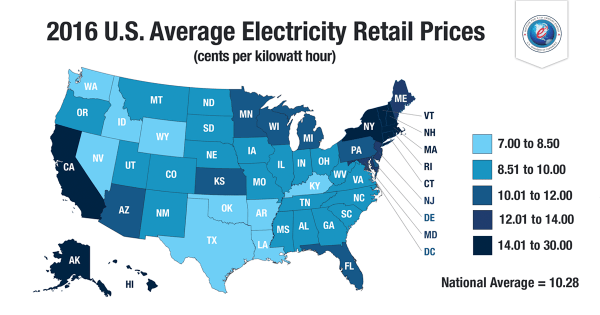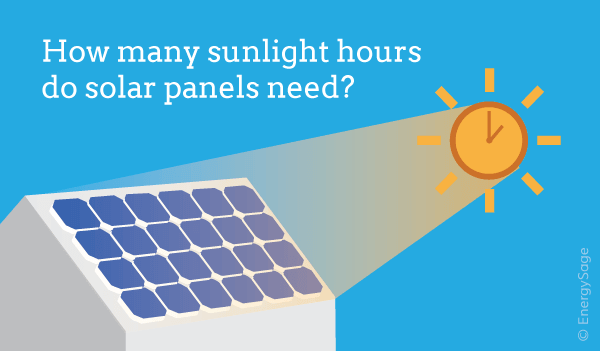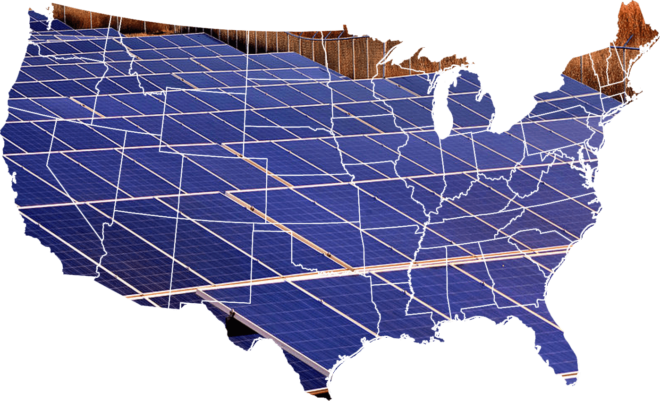This article was updated on June 08, 2023
With the prices of solar panel system is falling rapidly, installing one for your home can trim down the amount of your energy bill and that is if you have done your research correctly. The cost of residential PV systems that can produce enough electricity for residential consumption a decade ago was more than $50,000.
However, with the new technologies that help solar panels evolved, we have the price plummeting to more than sixty percent in the last several years.
The average cost of a solar panel generating about six kilowatts of power, a typical size required by residential homes can be between $16,260 and $ 21,420 today. That is according to the energy marketplace, EnergySage on their per-watt estimate. This amount is before applying the tax incentives.

Related: Best Solar Flagpole Light of 2023 (The Top 5 For you)
Simple Guidelines to Determine the Cost of Solar Panels Cost of Electricity
The general rule in the USA when it comes to energy consumption for an average house is one kilowatt per hour (kWh). Each month has approximately 730 hours, and in the States, the average price of electricity is $0.10 per kilowatt-hour.
If you will compute, the average electricity consumption per month based on the figures mentioned is around $73.
The amount computed is for a household using the necessary appliances only and does not consider the non-standard items are running on electricity like the hot tub or other appliances that are running uninterrupted.
Things like the flat-screen TV, computer and the game consoles are all-consuming power and has a considerable impact on the consumption. Another factor that can affect consumption is the air conditioning system.
In addition, the cost of electricity in the US varies per location. It can go as low as $0.07 per kilowatt-hour like in West Virginia and as high as $0.24 per kilowatt-hour like in Hawaii. Therefore, you have to make a few adjustments on this guideline to get the estimated cost of electricity in your area.

Cost of Solar Panel and Installation
The conservative value we are using for the generating capacity of the solar panel is 10 watts per square foot. With this value, the efficiency of the panel in converting solar energy to electricity is approximately 12 percent.
Putting this into the amount of solar panel you may need, a kilowatt of power requires about 100 square feet of solar panels. If you have the sun shining brightly for 24 hours per day, 100 square feet of solar panels is enough to power your home using essential appliances.

However, this is not the case as the sun is only available during the daytime. Cloud cover and the length of each day that changes with the season can also affect the intensity of the sun. Putting this variable into perspective, you have to adjust the size of your solar panel system. There are many resources available on the internet to figure this out, and by putting the correct data; you can have an estimate for your solar panel requirements.
In the USA, the average time the sun shines the brightest is varied. It can be as little as 3 hours like in Chicago, Seattle and Pittsburg, a 5 -6 hours per day as seen in California and Colorado and as high as 7 hours per a day like in Arizona.
This means that the panel size varies from area to area and it can be anywhere between 400 square feet to 800 square feet. The general principle is you will need more solar panels if there is less sunshine and less solar panels if there is more sunshine in the area.

The average price for solar panels per watt is from $2.71 to $3.57. For an average-sized solar panel installation after tax credits in the US is ranging from $11,380 to $14,990.
www.oursolarenergy.com
There are utility companies that allow net metering, this a special meter that will take a spin backward when the electricity generated is more than what you have used, at the end of the year the average electric bill is zero. You will become a net purchaser during the winter months and the net supplier during summer.
This grid-tied system is different from the off-grid systems that are used in areas without electricity. There you will have higher installation costs because you will need batteries.
The average price for solar panels per watt is from $2.71 to $3.57. For an average-sized solar panel installation after tax credits in the US is ranging from $11,380 to $14,990. When you know the average cost per watt is significant because you will see the cost of installation on your home or business based on how much electricity you would want to generate.
If you need a bigger system, you need to buy more solar panels and more labor to be able to install it. When you apply the federal solar tax credit, the cost of the solar system is reduced by 30%.
There are also other states in the US where the government and local utilities are giving more tax incentives that will further reduce the cost of the solar system from installers.
Factors that affect the cost of installation for solar panels
When you ask for a solar quote from different providers in your area, you will notice a difference in their quote. There are factors the can affect the price of the solar panel system.
First is the equipment. The solar panels with a higher price tag are usually of higher quality and more efficient. The benefits you will get from them make up for the added cost. They can produce more electricity given the same exposure to the sun, and it comes with a full warranty.
Another factor is the cost of permits and labor. When your solar system is connected to the grid, you have to pay a fee. The amount of workforce required for installation is also significant, as you would need a designer for the system, coordinator to file the permits and the actual installer. These entail cost and time.
The features in your home can also have an impact on the installation cost. If you have a south-facing home with a 30-degree angle slope, it will be easy to install the solar panels. However, if your home has many levels, with dormers and skylights, it will take a lot of effort in finishing the installation. This additional effort equates to more installations costs.

